Twelve years ago that this story (supposedly "broke" on Israeli TV last week) began to filter out of the bowels of the earth, It was investigated and proven false by the Jerusalem Post and supported by (believe it or not) the New York Times. In fact the day this massacre supposedly happened (June 7, 1967) there were reporters embedded with the troops that supposedly killed these POW's. Not one of them supports the notion of a massacre; in fact many have come out in support of the IDF. The Camera report below tells all:
| False Israeli "Massacre" Story Resurrected -- by Israeli State Television | |||||||||||||||
Did Israeli forces massacre hundreds of Egyptian POW's during the Six Day War? A new documentary broadcast on Israel's Channel 1 alleges that such a massacre did take place, and attributes the killings to the elite Shaked reconaissance unit, then led by Binyamin Ben-Eliezer, the Labor MK and retired General who heads the National Infrastructures Ministry (for details see Egypt wants probe into 'IDF massacre'.) What the documentary apparently did not mention, is that this massacre charge was first reported – and then thoroughly debunked – more than 10 years ago. Following initial stories alleging a massacre in 1995, the Jerusalem Post reported that “transcripts of orders from the Six Day War … clearly indicate that the alleged mass murder of Egyptian POWs near El-Arish never occurred …” Instead, what actually happened according to the Post was a full-fledged battle between armed combatants:
In addition, Israeli journalist Gabi Bron, who was serving with the IDF near El Arish at the time, and who is sometimes cited in reports as a witness to a massacre, has stated publicly that no massacre took place. Asked about the issue by Israeli historian Michael Oren, Bron replied:
Supporting this is a contemporaneous account from the New York Times, which reported battles, but no massacres. Datelined El-Arish, June 7, 1967, the Times article reported that:
Perhaps as important as the corroborating details offered by this account, is the affirmation that in El Arish on June 7th Israeli forces were accompanied by reporters who evidently neither saw nor heard even a hint of any alleged massacre. And not just reporters; photographers also accompanied the Israeli troops throughout their advance into the Sinai. Indeed, an American photographer for Life Magazine, Paul Schutzer, was killed while riding with Israeli troops in a half-track that came under Egyptian attack. Despite the dangers, these news photographers, both Israeli and foreign, filed numerous battle images, as well as photos of the war’s immediate aftermath, such as Israeli soldiers dealing with Arab POWs in El Arish during the very time that some now charge an ongoing slaughter:
The photographers also recorded Israeli doctors tending to wounded POWs. Why the Israelis would bother to provide advanced medical care to POWs while they were at the same time slaughtering them is unclear:
Some of the wounded Egyptian POWs bade a friendly goodbye as they were being repatriated to Egypt:
(For further details on these massacre allegations click here and here.) The bottom line is that charges of Israeli wrongdoing – such as this alleged massacre – often take on a life of their own, and no matter how discredited, many are eventually resurrected and reported again, with the facts that disproved them conveniently forgotten, or at least ignored. | |||||||||||||||
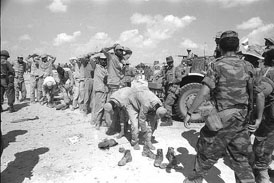
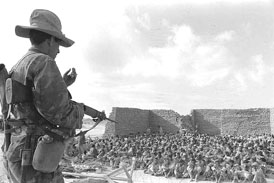
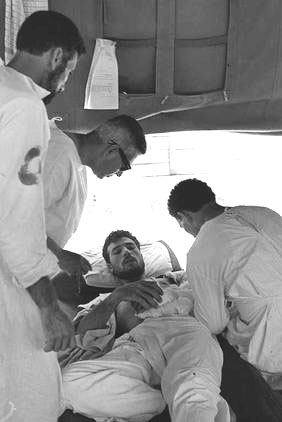
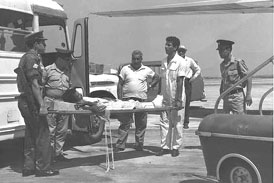
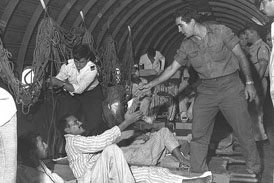
No comments:
Post a Comment